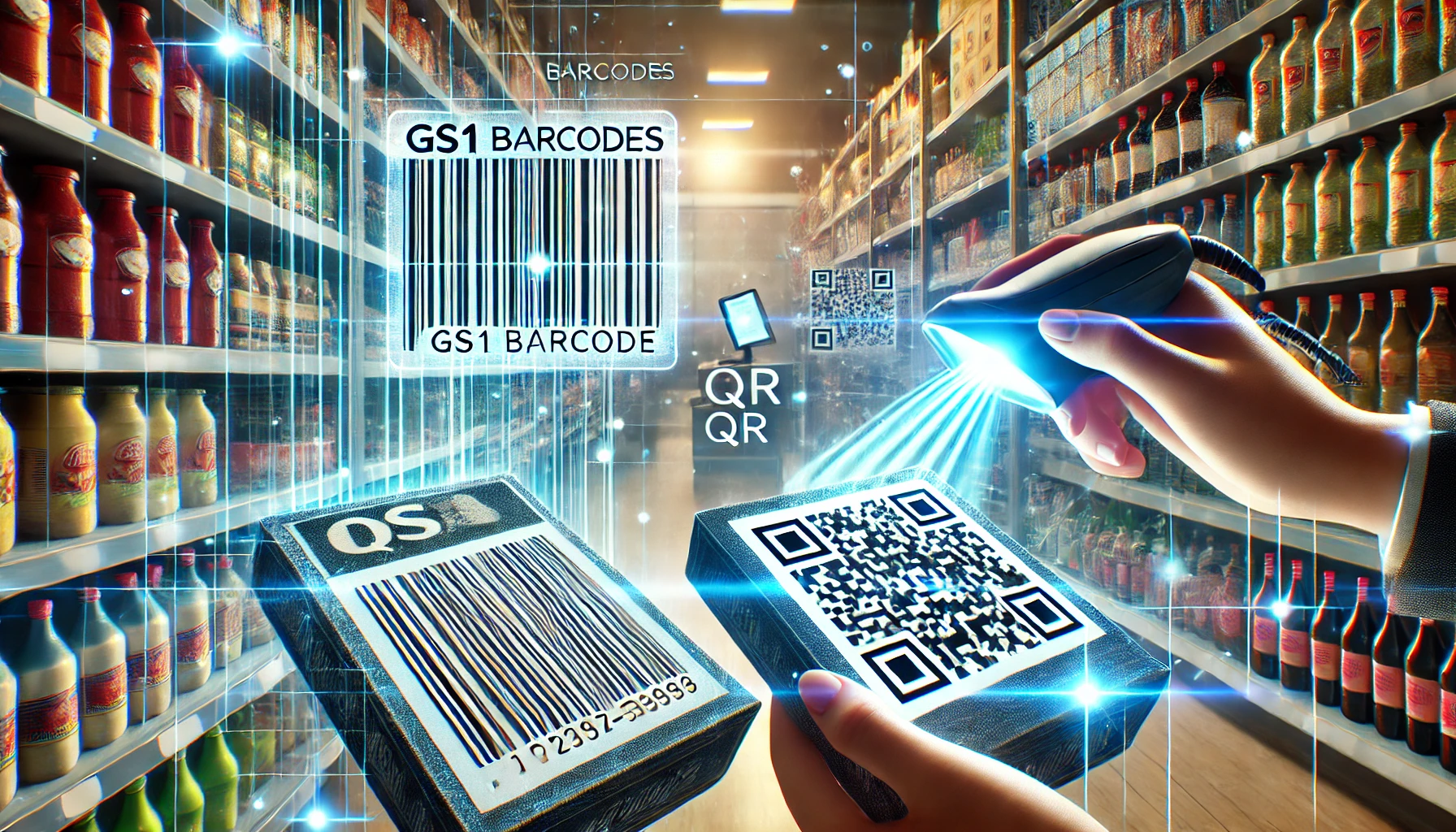News and Announcements

The Relevance of GS1 Barcodes and the Rise of QR Codes: How They Connect and Evolve
- Published October 29, 2024 11:00PM UTC
- Publisher Steve Torso
- Categories Capital Insights, Landing, Trending
Recently, GS1 standards have been coming up in several conversations, particularly the relevance of traditional barcodes in an increasingly digital world. One aspect that’s emerging as crucial is the connection between GS1 barcodes and QR codes, two powerful tools in the landscape of product identification and supply chain management.
GS1 Barcodes: The Backbone of Global Standardisation
GS1 barcodes are the foundation of global commerce, enabling consistent product identification across supply chains, markets, and geographies. Managed by GS1, these barcodes are part of a standardised system that enhances supply chain transparency, efficiency, and interoperability.
1. Standardised Product Identification
GS1 barcodes help products speak a common language across the world. When scanned, these barcodes provide essential product details, making it easier for manufacturers, distributors, and retailers to manage stock efficiently.
2. Data Accuracy and Efficiency
By encoding key product data, GS1 barcodes eliminate manual data entry errors, improving the accuracy of sales records, inventory management, and logistics.
3. Consumer Trust and Regulatory Compliance
In an era where consumers demand transparency, GS1 barcodes can also link to product details such as safety information or authenticity checks. Moreover, they meet various regulatory requirements—critical in sectors like pharmaceuticals, where traceability is mandatory.
QR Codes and GS1 Standards: A New Evolution
The rise of QR codes introduces new opportunities for engagement and data management. GS1 has developed standards for QR codes—GS1 QR Codes—which build upon the same reliable foundations as traditional barcodes but with added versatility.
1. GS1 QR Codes Explained
Like traditional GS1 barcodes, QR codes can be used to encode product information. However, QR codes offer a higher data capacity. This allows them not only to identify products but also to provide a gateway to additional information, such as promotional content, safety guidelines, or even interactive brand experiences. For instance, a consumer scanning a GS1 QR Code could be redirected to a website showcasing the product’s story or its sustainability credentials.
2. Expanding the Scope of Product Data
The GS1 standard for QR codes allows businesses to encode structured data, including Global Trade Item Numbers (GTINs), batch numbers, and expiry dates. This helps maintain consistency while allowing the flexibility to provide more enriched information.
Key Differences Between GS1 Barcodes and QR Codes
Data Capacity and Flexibility
Traditional GS1 barcodes can encode basic product identification information. QR codes, however, have a much greater capacity and can store links, text, or other data—making them ideal for customer engagement purposes. This means that QR codes not only provide product details but can also connect to websites, marketing campaigns, or support platforms.
Technology and Usage Context
GS1 barcodes are primarily scanned using laser scanners, and their main application lies in retail checkout or inventory management. QR codes, on the other hand, require a 2D imaging scanner or a smartphone camera, making them far more versatile. Whether it’s tracking inventory, providing digital payment options, or sharing promotional material, QR codes serve a broader scope beyond just supply chain management.
Resilience and Accuracy
QR codes have a notable feature of error correction, meaning they can still be scanned even if part of the code is damaged—something traditional GS1 barcodes lack. This resilience makes QR codes particularly suitable for environments where labels might face wear and tear.
How They Work Together: The Best of Both Worlds
The connection between GS1 barcodes and QR codes comes down to their shared mission: enabling accurate product identification and data exchange, albeit with different approaches and capabilities.
1. Enhancing the Customer Experience
GS1 barcodes remain critical for seamless operations, such as retail checkouts and logistics. QR codes extend this by enabling brands to share additional details directly with consumers, enhancing transparency and building trust. For instance, while a GS1 barcode might allow a retailer to identify a product at the point of sale, a QR code could allow a customer to scan and see nutritional information, trace the product’s origins, or access special offers.
2. Supporting Sustainability and Efficiency
By streamlining supply chain processes and improving data accuracy, both GS1 barcodes and QR codes contribute to better resource management. Efficient logistics and transparent tracking can reduce waste, lower carbon footprints, and ensure that the supply chain operates smoothly—an increasing priority in a world moving towards sustainability.
Conclusion: The Role of GS1 Barcodes and QR Codes in Modern Commerce
GS1 barcodes have been pivotal in establishing a global standard for product identification, allowing smooth supply chain operations across industries. QR codes, especially GS1-compliant versions, are an evolution that offers richer possibilities, connecting the physical product to the digital realm.
For businesses looking to enhance efficiency, ensure regulatory compliance, and provide a richer customer experience, leveraging both GS1 barcodes and QR codes is a smart strategy. By integrating these technologies, companies can streamline operations, empower consumers with information, and future-proof their processes in an increasingly digitised marketplace.
Trending
Backed By Leading Investment Groups and Family Offices







